Serves 2
Level of difficulty: 1
Procedure:
Sous vide processing temperature settings can be adjusted to accommodate specific time requirements. People who plan to spend the day in the kitchen usually prefer shorter processing intervals. People who work outside the home favor intervals that allow them to start the process in the morning. They can then return in the evening and finish preparing their meal in less than one hour. To accomplish this, sous vide gives us two choices for processing chicken breasts.
Sous vide process the chicken breasts at
140 F/60 C for 4 hours.
OR
Sous vide process the chicken breasts at
135 F/58 C for 6 hours.
Preheat your sous vide bath to the desired temperature setting that accommodates your timing needs.
Stage the chicken breasts into dedicated vacuum bags. Make sure they are not stacked; there should only be one layer. If you use self sealing bags (Ziploc for example), remove the air from the bag using the water displacement method linked here.
Process the chicken breasts as per the options described above.

After processing is complete, reduce the bath temperature to 127 F/57 C. The chicken breasts can be kept at this temperature for up to six hours without any detectable change in quality. This gives you the freedom to assemble the rest of your meal, knowing that once everything else is ready you are only a few minutes away from finishing your entrée.
When you are ready to assemble your meal, remove the bag from the bath. Submerge in hot tap water for five minutes. Remove breasts from bag and pat very dry with a paper towel. Lay the breasts out on parchment or butcher paper. Squeeze one of the lemon wedges over the breasts and sprinkle with salt and pepper. Dredge the breasts in flour and shake off the excess. Heat your skillet to
300 F/150 C.
Add the vegetable oil to the heated pan and sear the breasts until they achieve the desired appearance. Do not crowd the pan. For best results, allow 2″/5 cm between each breast.
This process takes about one minute on each side. A probe thermometer inserted in the thickest part of the breast should read 130 F/55 C or higher. Remove the chicken breasts from the pan and pour off the excess oil. Add the white wine/broth to the pan (see the slides below).
Reduce heat to medium and squeeze three of the remaining lemon wedges into the pan. Add the salt. Reduce the liquid by half–this should take only about one minute. Reduce heat further and add the cold butter. Stir and turn off the burner when the butter has melted. Return the chicken breasts to the pan and coat with the sauce.
Serve the chicken breasts, top with remaining sauce; garnish with chopped parsley and the remaining lemon wedges.
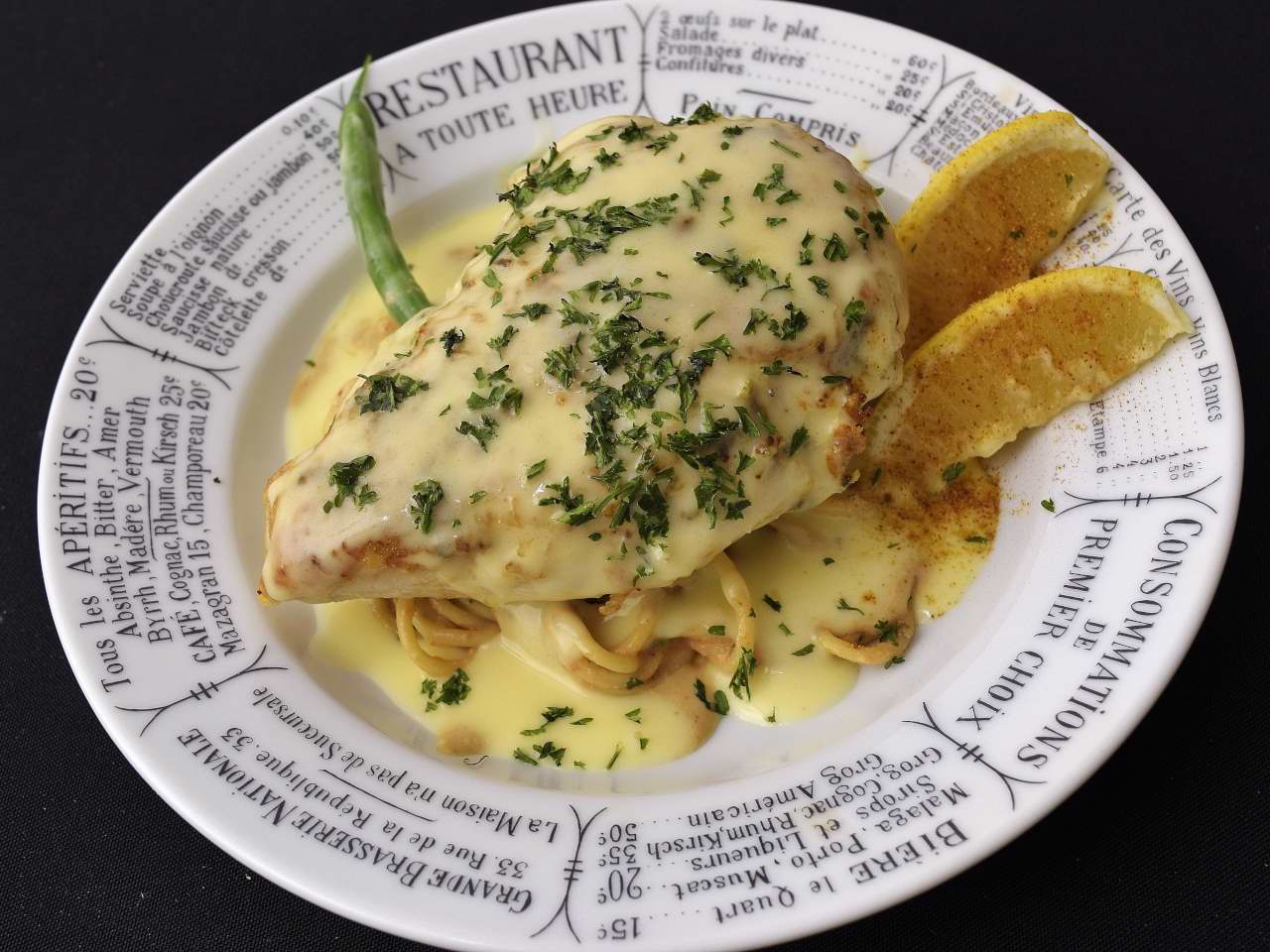
Searing and deglazing:
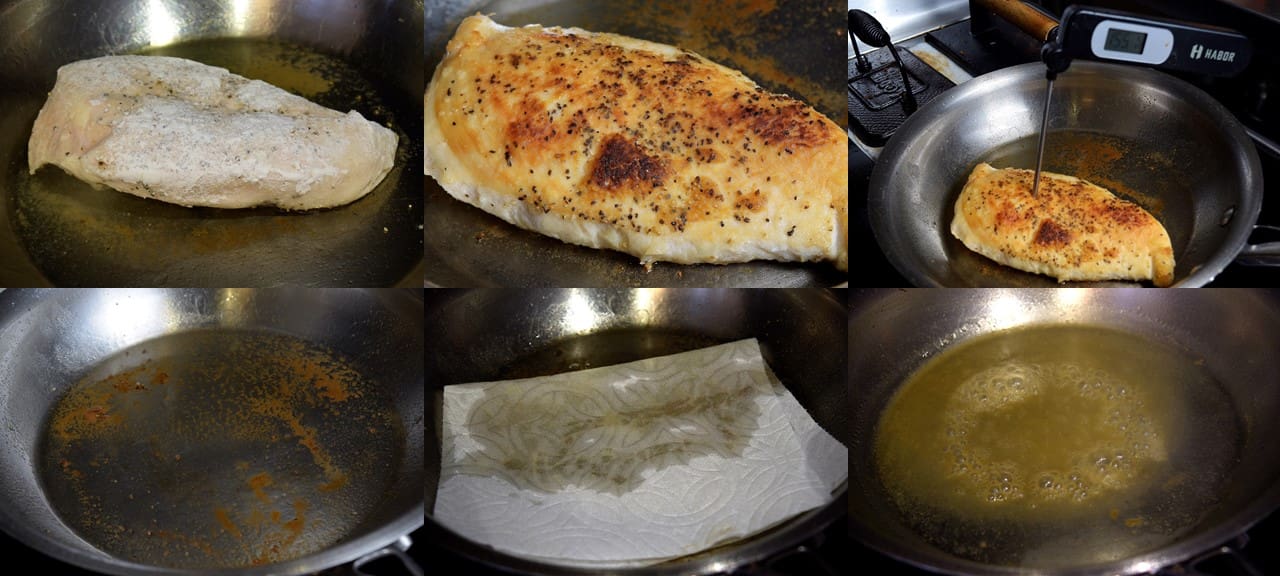
Reducing and finishing the sauce.
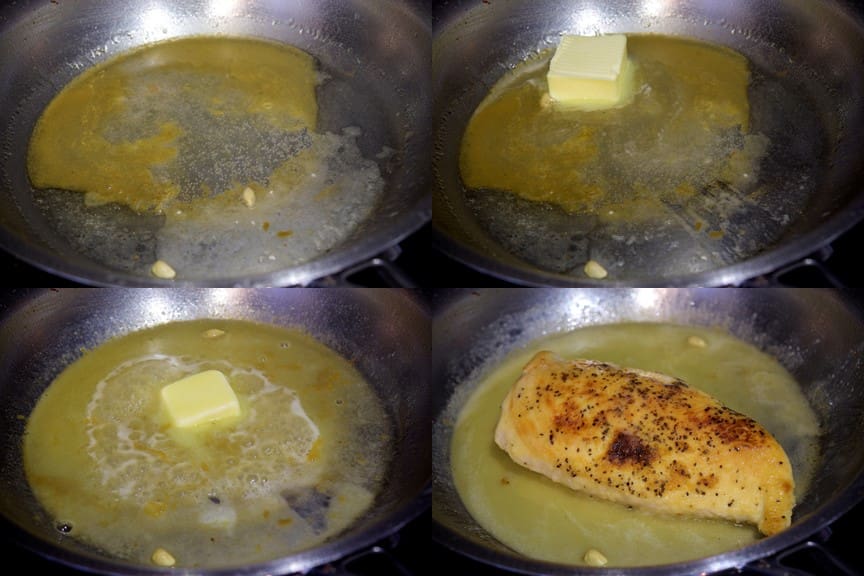
As an alternate presentation, slice the breast on the bias before saucing–then drizzle some sauce on the plate below, and sprinkle the top…
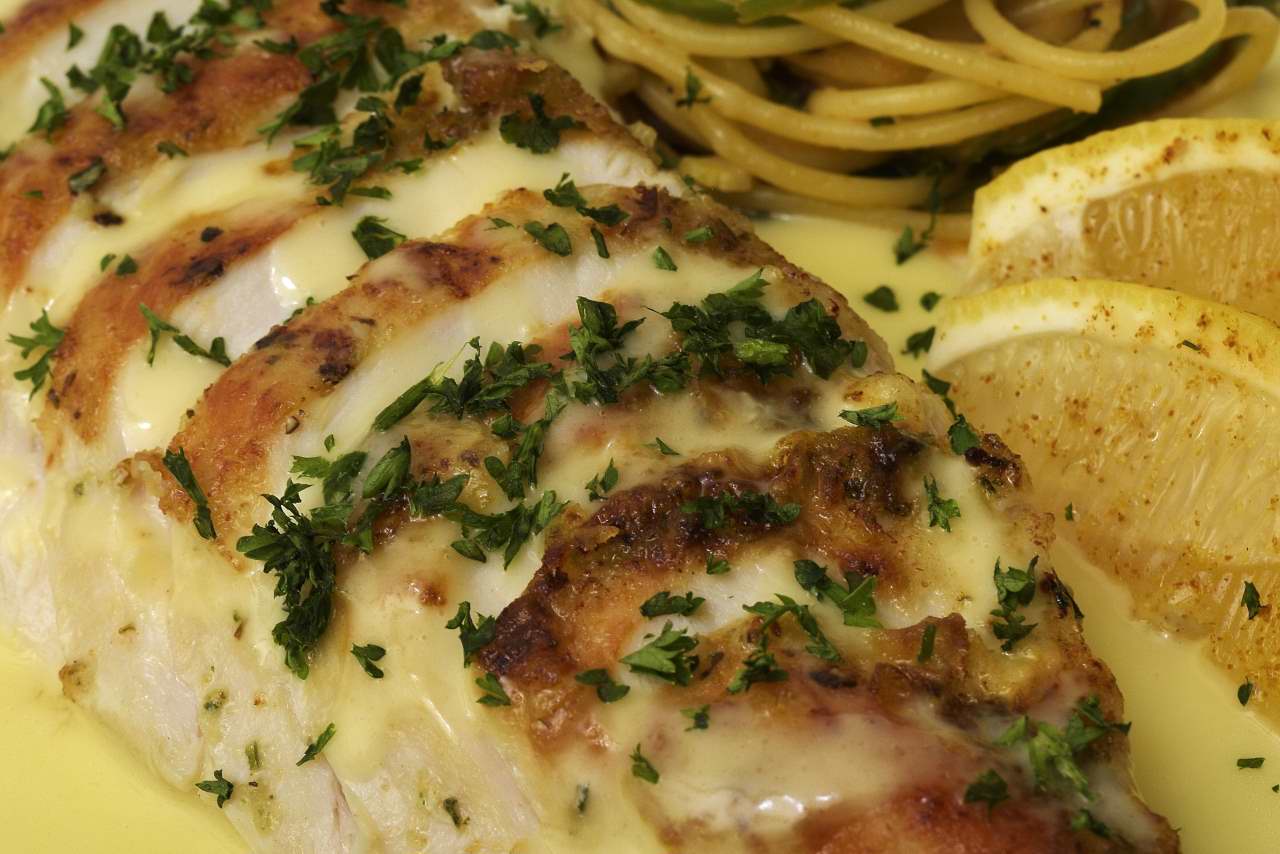
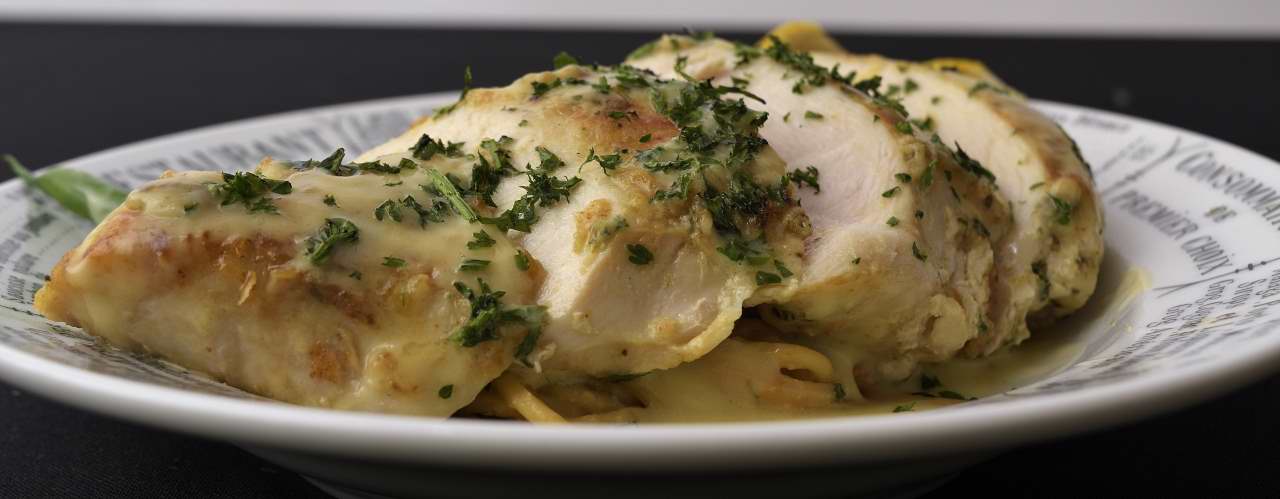 Happy Processing!
Happy Processing!
Norm King
